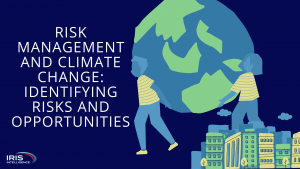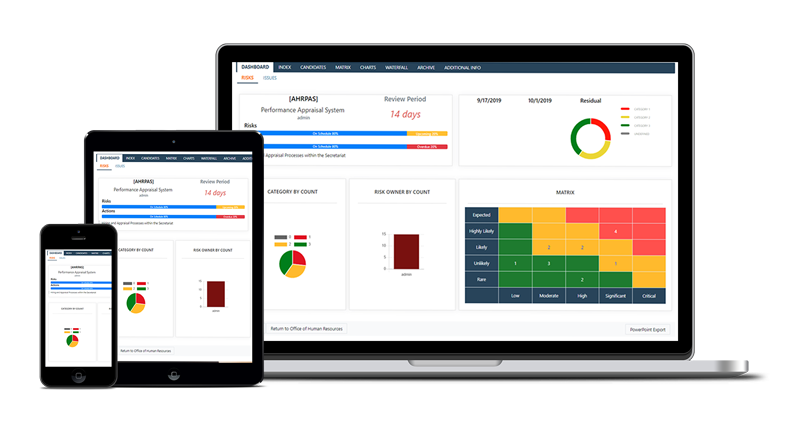Many public conversations we have about science-related issues involve communicating risks: describing them, comparing them and trying to inspire action to avoid or mitigate them.
Just think about the ongoing stream of news and commentary on health, alternative energy, food security and climate change.
Good risk communication points out where we are doing hazardous things. It helps us better navigate crises. It also allows us to pre-empt and avoid danger and destruction.
But poor risk communication does the opposite. It creates confusion, helplessness and, worst of all, pushes us to actively work against each other even when it’s against our best interests to do so.
So what’s happening when risk communications go wrong?
People are just irrational and illogical
If you’re science-informed – or at least science-positive – you might confuse being rational with using objective, science-based evidence.
To think rationally is to base your thinking in reason or logic. But a conclusion that’s logical doesn’t have to be true. You can link flawed, false or unsubstantiated premises to come up with a logical-but-scientifically-unsubstantiated answer.
For example, in Australia a few summers back there was increase in the number of news reports of sharks attacking humans. This lead to some dramatic shark baiting and culling. The logic behind this reaction was something like:
- there have been more reports of shark attacks this year than before
- more reports means more shark attacks are happening
- more shark attacks happening means the risk of shark attack has increased
- we need to take new measures to keep sharks away from places humans swim to protect us from this increased risk.
You can understand the reasoning here, but it’s likely to have been based on flawed premises. Like not realising that one shark attack was not systematically linked to another (for example, some happened on different sides of the country). People here saw connections between events that probability suggests were actually random.
Prove it’s safe or we’ll say no
If people are already nervous about – or actively against – a risky proposition, one reaction is to demand proof of safety. But safety is a relative term and risk calculation doesn’t work that way.
To demand proof of safety is to demand certainty, and such a demand is scientifically impossible. Uncertainty is at the heart of the scientific method. Or rather, qualifying and communicating degrees of uncertainty is.
In reality, we live in a world where we have to agree on what constitutes acceptable risk, because we simply can’t provide proof of safety. To use an example I’ve noted before, we can’t prove orange juice is 100% safe, yet it remains defiantly on our supermarket shelves.
Don’t worry, this formula will calm your fears
You may have seen this basic risk calculation formula:
Risk (or hazard) = (the probability of something happening) × (the consequences of it happening)
This works brilliantly for insurance assessors and lab managers, but it quickly falls over when you use it to explain risk in the big bad world.
Everyday reactions to how bad a risk seems are more often ruled by the formula (hazard) × (outrage), where “outrage” is fuelled by non-technical, socially-driven matters.
Basically, the more outraged (horrified, frightened) we are by the idea of something happening, the more likely we are to consider it unacceptable, regardless of how statistically unlikely it might be.
The shark attack examples serves here, too. The consequences of being attacked by a shark are outrageous, and this horror colours our ability to keep the technical likelihood of an attack in perspective. The emotional reality of our feelings of outrage eclipse technical, detached risk calculations.
Significant means useful
Everyone who’s worked with statistics knows that statistical significance can be a confusing idea. For example, one study looked at potential links between taking aspirin everyday and the likelihood of having a heart attack.
Among the 22,000 people in the study, those who took daily aspirin were less likely to have a heart attack than those who didn’t, and the result was statistically significant.
Sounds like something worth paying attention to, until you discover that the difference in the likelihood of having a heart attack between those who were taking aspirin every day and those who weren’t was less than 1%.
Significance ain’t always significant.
Surely everyone understands percentages
It’s easy to appreciate that complex statistics and formulae aren’t the best tools for communicating risk beyond science-literate experts. But perhaps simple numbers – such as percentages – could help remove some of the confusion when talking about risk?
We see percentages everywhere – from store discounts, to weather forecasts telling you how likely it is to rain. But percentages can easily confuse, or at least slow people down.
Take this simple investment decision example. If you were offered a choice between the following three opportunities, which would you take?
a) have your bank balance raised by 50% and then cut by 50%
b) have your bank balance cut by 50% and then raised by 50%
c) have your bank balance remain where it is
You probably got this right. But perhaps you didn’t. Or perhaps it took you longer than you’d expected to think it through. Don’t feel bad. (The answer is at the end of this article.)
I have used this in the classroom, and even science-literate university students can get it wrong, especially if they are asked to decide quickly.
Now imagine if these basic percentages were all you had to make a real, life-or-death decision (while under duress).
Just a few simple numbers could be helpful, couldn’t they?
Well actually, not always. Research into a phenomenon known as anchoring and adjustment shows that the mere presence of numbers can affect how likely or common we estimate something might be.
In this study, people were asked one of the following two questions:
- how many headaches do you have a month: 0, 1, 2?
- how many headaches do you have a month: 5, 10, 15?
Estimates were higher for responses to the second question, simply because the numbers used in the question to prompt their estimates were higher.
At least the experts are evidence-based and rational
Well, not necessarily. It turns out experts can be just as prone to the influences of emotion and the nuances of language as we mere mortals.
In a classic study from 1982, participants were asked to imagine they had lung cancer and were told they would be given a choice of two therapies: radiation or surgery.
They were then informed either (a) that 32% of patients were dead one year after radiation, or (b) that 68% of patients were alive one year after radiation. After this they were asked to hypothetically choose a treatment option.
About 44% of the people who were told the survival statistic chose radiation, compared to only 18% of those who were told the death statistic, even though the percentages reflected the same story about surviving radiation treatment.
What’s most intriguing here is that these kinds of results were similar even when research participants were doctors.
So what can we do?
By now, science-prioritising, reason-loving, evidence-revering readers might be feeling dazed, even a little afraid.
If we humans, who rely on emotional reactions to assess risks, can be confused even by simple numbers, and are easily influenced by oddities of language, what hope is there for making serious progress when trying to talk about huge risky issues such as climate change?
First, don’t knock emotion-driven, instinct-based risk responses: they’re useful. If you’re surfing and you notice a large shadow lurking under your board, it might be better to assume it’s a shark and act accordingly.
Yes it was probably your board’s shadow, and yes you’ll feel stupid for screaming and bolting for land. But better to assume it was a shark and be wrong, than assume it was your shadow and be wrong.
But emotion-driven reactions to large, long-term risks are less useful. When assessing these risks, we should resist our gut reactions and try not to be immediately driven by how a risk feels.
We should step back and take a moment to assess our own responses, give ourselves time to respond in a way that incorporates where the evidence leads us. It’s easy to forget that it’s not just our audiences – be they friends or family, colleagues or clients – who are geared to respond to risks like a human: it’s us as well.
With a bit of breathing space, we can try and see how the tricks and traps of risk perception and communication might be influencing our own judgement.
Perhaps you’ve logically linked flawed premises, or have been overly influenced by a specific word or turn of phrase. It could be your statistical brain has been overwhelmed by outrage, or you tried to process some numbers a little too quickly.
If nothing else, at least be wary of shouting “Everyone’s gotta love apples!” if you’re trying to communicate with a room full of orange enthusiasts. Talking at cross-purposes or simply slamming opposing perspectives on a risk is probably the best way to destroy any risk communication effort – well before these other quirks of being human even get a chance to mess it up.
Answer: Assume you start with $100. Options 1 and 2 leave you with $75, option 3 leaves you with your original $100. Note that no option puts you in a better position
This article was originally published in The Conversation: https://theconversation.com/why-dont-people-get-it-seven-ways-that-communicating-risk-can-fail-68912
Rod Lamberts is deputy director of the Australian National Centre for Public Awareness of Science, Australian National University






